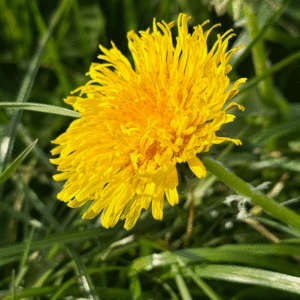The Dandelion
The Dandelion
Taraxacum

As one of the first flowers in my garden in early Spring, the Dandelion is a vital source for our pollinators. So please leave them to flower and seed where you can! Belonging to the Taraxacum genus, the Dandelion is a native perennial plant. Although it looks like one flower, its flower head is actually made up of up to 200 small florets
Each of the tiny florets turns into seed or furit contained in what we call ‘The Dandelion Clock’, a gossamer fine globe of little white parachutes. As a child I would use the seed heads to tell the time, blowing the seeds to the four winds, one puff for every hour!
Dandelion flowers are important for Bees (Honeybees, Bumblebees and Solitary Bees), Flies, Beetles (including Ladybirds) and Butterflies. Its leaves are also a caterpillar foodplant for a variety of Moths, including the Orange Swift, the Yellow Underwing, Giant Leopard and Riband Wave
Dandelions are popular with responsible foragers who use their flower heads and leaves in a variety of ways, from wine, risotto, salad leaves and coffee! It is famous for its diuretic properties hence its name in French ‘Pissenlit’, probably due to the high concentration of potassium in this plant.
Candida Hopkinson